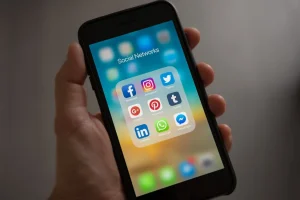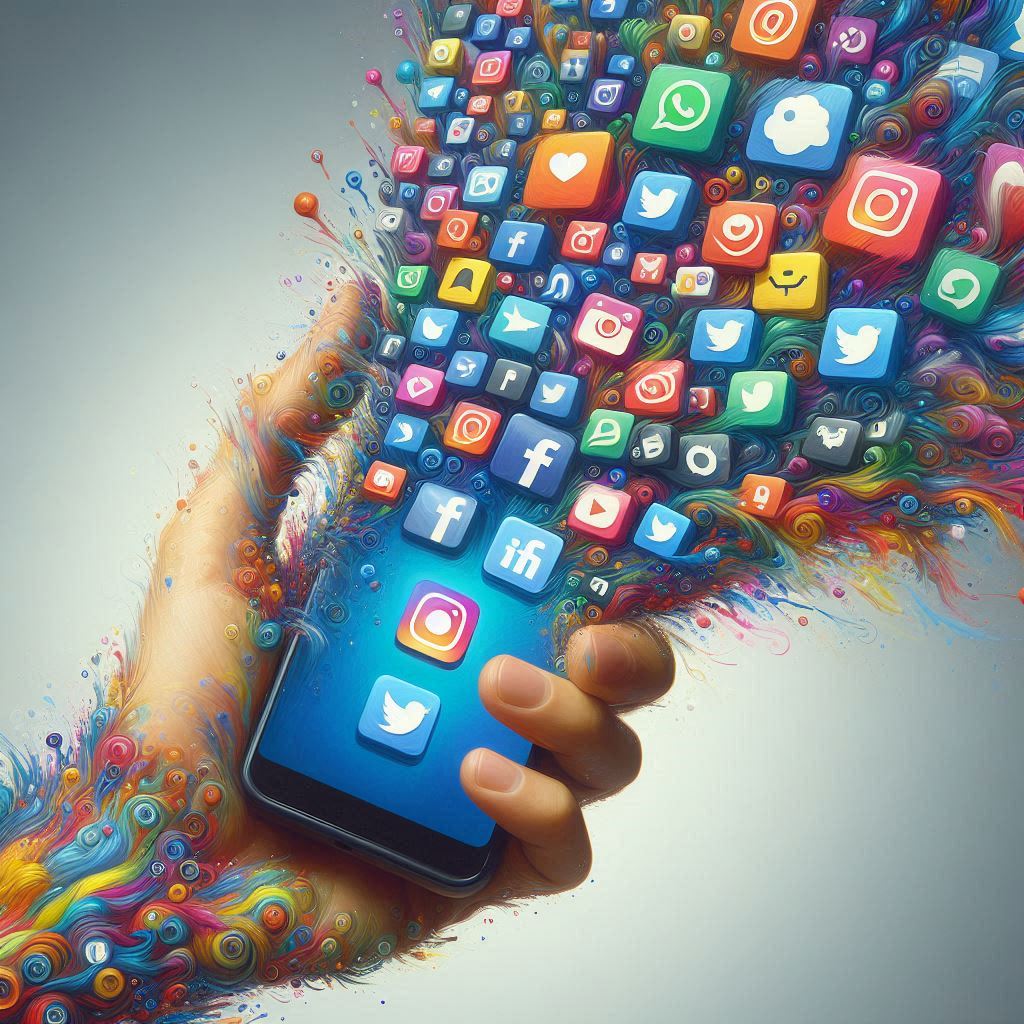Introduction
Mobile marketing has become an unstoppable force, shaping how we live, interact, purchase, and communicate. With global smartphone users estimated at 5.25 billion in 2023 an astonishing 98% increase since 2016, the digital landscape is more mobile-centric than ever.
South Africa stands out as a particularly promising market for mobile marketing strategies, given the rapid adoption of smartphones across various demographics.
Recent statistics reveal that over 90% of South Africans own a mobile phone, with a significant portion using smartphones.
This widespread adoption presents businesses with immense opportunities to engage directly with their audience through their most personal device. Mobile marketing offers immediacy, personalization, and accessibility that other channels simply cannot match. For more insights into mobile marketing in South Africa, visit Channel Mobile.
In this article, we delve into the evolution of mobile marketing and examine the current smartphone landscape in South Africa. We’ll explore effective mobile marketing strategies tailored for this booming market:
- SMS Marketing: Directly reaching consumers on their phones
- In-App Advertising: Capturing attention within mobile apps
- WhatsApp Business API: Engaging customers at scale
- USSD Services: Bridging the digital divide
By leveraging these strategies, businesses can tap into South Africa’s smartphone boom and drive meaningful customer engagement.

The Evolution of Mobile Marketing
Key Milestones in the Development of Mobile Marketing
Mobile marketing has undergone significant transformation since its inception. Early forms of mobile communication began with simple text messages, but as technology advanced, so did marketing strategies.
Pivotal moments include:
- 1992: The first SMS message was sent, marking the birth of mobile messaging.
- 2000s: Introduction of mobile web access, enabling brands to connect with consumers via mobile websites.
- 2008: Launch of the Apple App Store, revolutionizing app-based marketing.
- 2010s: Emergence of social media apps like Instagram and Snapchat, integrating marketing directly into user interactions.
Transition from Feature Phones to Smartphones
The shift from feature phones to smartphones had a profound impact on marketing strategies. Initially, marketing efforts were limited to basic SMS and MMS campaigns. However, with smartphones’ introduction:
- Enhanced capabilities: High-resolution screens and internet access enabled rich media content.
- App-based interactions: Brands could create immersive experiences through dedicated apps.
- Data-driven insights: Marketers gained access to valuable user data for targeted campaigns.
Smartphones not only expanded possibilities but also allowed for hyper-personalization, making it easier for brands to deliver tailored content to their audience segments.
Understanding the South African Smartphone Landscape
South Africa’s smartphone boom presents a transformative opportunity for businesses seeking to leverage mobile marketing. Recent data indicates that smartphone penetration in the country stands at approximately 91%, with a significant uptake across various age groups and socio-economic segments.
Key Statistics on Smartphone Usage:
- Smartphone Penetration: Approximately 91% of South Africans own a smartphone.
- Demographics: High adoption rates observed among both younger and older age groups.
- Urban vs Rural: Urban areas show slightly higher adoption, yet rural regions are rapidly catching up.
Unique Characteristics of South African Smartphone Users:
- Content Consumption Preferences: South African smartphone users exhibit a strong preference for multimedia content, including videos and images. This provides an opportunity for brands to create visually appealing and engaging campaigns.
- Video Content: South Africans have shown a strong preference for consuming video content on platforms like YouTube and TikTok.
- Social Media Engagement: High levels of engagement on social media platforms such as Facebook, WhatsApp, and Instagram.
- Purchasing Behavior: South African smartphone users are increasingly relying on their devices for online shopping, with a significant rise in mobile transactions. This trend highlights the importance of optimizing websites and apps for mobile use and implementing seamless payment options.
- Mobile Shopping: Increasing trend towards using smartphones for online shopping, driven by convenience and accessibility.
- Payment Methods: Preference for mobile payment solutions like SnapScan and Zapper, reflecting a shift towards cashless transactions.
Understanding these patterns enables businesses to tailor their mobile marketing strategies effectively, ensuring they resonate with the preferences and behaviors of South African consumers.
By aligning marketing efforts with these insights, brands can create more engaging and impactful campaigns.
Mobile Marketing Strategies That Work in South Africa
1. SMS Marketing: Reaching Consumers Directly on Their Phones
Benefits of using SMS:
- High open rates: SMS messages boast open rates as high as 98%, ensuring that your communication is seen by the majority of recipients.
- Instant delivery: Messages are delivered within seconds, making SMS an ideal channel for time-sensitive promotions and updates.
Techniques for crafting compelling Bulk SMS campaigns:
1. Personalized Messaging:
- Address customers by their first names to create a personal connection.
- Tailor content based on past interactions or preferences.
2. Clear Calls-to-Action (CTAs):
- Use direct and concise language to guide recipients towards the desired action.
- Examples include “Shop Now,” “Claim Your Discount,” or “Join Our Webinar.”
3. Segmented Campaigns:
- Divide your audience into segments based on demographics, behavior, or purchase history.
- Targeted messaging ensures higher relevance and engagement.
4. Timing and Frequency:
- Send messages at optimal times when your audience is most likely to engage.
- Avoid spamming by maintaining a balanced frequency of messages.
Case Studies:
- Retail Brand Success: A leading South African retail brand utilized personalized Bulk SMS campaigns during the festive season, resulting in a 30% increase in foot traffic and a significant boost in sales. By offering exclusive discounts and timely reminders, they effectively drove customer engagement.
- Healthcare Initiative: A healthcare provider implemented Bulk SMS to remind patients about appointments and health check-ups. This approach led to improved attendance rates and enhanced patient satisfaction, demonstrating the power of SMS in fostering reliable communication.
By leveraging SMS marketing, businesses can tap into the expansive reach of mobile users in South Africa, driving both engagement and conversions through personalized, timely, and direct communication channels.
2. In-App Advertising: Capturing Attention Within Mobile Apps
In-app advertising has become a cornerstone of mobile marketing strategies, particularly in South Africa where smartphone usage is on the rise. Businesses can leverage various ad formats to capture users’ attention within mobile applications:
1. Banners
These are small, rectangular ads that appear at the top or bottom of the screen. Despite their size, they can be highly effective due to their persistent visibility.
2. Interstitials
Full-screen ads that cover the host app’s interface. Typically displayed at natural transition points, such as between game levels or during app loading screens.
To maximize engagement and minimize disruption, best practices include:
- Visual Appeal: High-quality images and compelling graphics can significantly enhance user engagement.
- Relevance: Ads tailored to user preferences and behaviors are more likely to resonate. Leveraging data analytics can help in creating personalized ad experiences.
- Non-Intrusiveness: Ensuring ads do not interfere with the core functionality of the app is crucial. For instance, interstitials should be strategically placed to avoid interrupting key user actions.
By adhering to these principles, businesses can create in-app ads that not only capture attention but also provide value, enhancing the overall user experience without causing frustration.
3. Leveraging WhatsApp Business API for Customer Engagement at Scale
South Africa has a large number of WhatsApp users, making it a perfect channel for businesses looking to connect with their audience personally. The widespread use of the platform shows how effective it is in overcoming communication barriers and providing a smooth user experience.
To take advantage of this trend, businesses can use different strategies with the WhatsApp Business API:
1. Automated Replies
Setting up automated replies ensures that customer queries are acknowledged instantly, enhancing customer satisfaction and engagement. This feature allows businesses to offer 24/7 support without the need for constant human oversight.
2. Quick Replies
Pre-set responses for frequently asked questions streamline interactions and save time for both customers and support teams. Quick replies ensure consistent communication and help maintain professionalism in responses.
3. Labels
Organizing chats using labels allows businesses to categorize conversations based on different criteria such as status or type of inquiry. This organization aids in efficient follow-up and better management of customer interactions.
These features not only streamline customer interactions but also maintain a human touch, crucial for building strong relationships with consumers.
By leveraging the WhatsApp Business API, brands can deliver personalized experiences at scale, ensuring they stay relevant and engaging in an increasingly competitive market.
4. USSD Services: Bridging the Digital Divide with Accessible Marketing Solutions
USSD (Unstructured Supplementary Service Data) technology plays a crucial role in bridging the digital divide, particularly in regions like South Africa where internet connectivity can be inconsistent and smartphone penetration is still growing.
Unlike SMS marketing or mobile ads, USSD does not require an internet connection and works seamlessly on feature phones, making it an inclusive tool for reaching a broader audience.
Key Features and Benefits of USSD:
- Accessibility: USSD is widely accessible, requiring only a GSM network connection. This makes it ideal for users who do not have smartphones or reliable internet access.
- Real-Time Interaction: USSD allows for real-time communication with users, providing immediate feedback and interaction.
- Cost-Effective: For both businesses and consumers, USSD is generally a cost-effective solution compared to other mobile marketing strategies.
Creative Uses of USSD Codes
Brands can leverage USSD codes in various innovative ways to engage their audience effectively:
- Promotional Campaigns: Generate unique USSD codes that users can dial to access special promotions, discounts, or offers. This method ensures that even users with basic devices can participate in marketing initiatives.
- Surveys and Feedback: Use USSD codes to conduct surveys or gather customer feedback. This approach makes it easy for customers to provide their input without needing an internet connection.
- Service Delivery: Facilitate essential services such as mobile banking, balance inquiries, or utility bill payments through USSD codes.
USSD services are particularly effective in the South African market due to their ability to reach diverse demographics inclusively.
By integrating USSD into their mobile marketing strategies, businesses can ensure they are not excluding potential customers who may not have access to smartphones or the internet.
The Role of Hyper-Personalization and Emerging Technologies in Shaping Future Mobile Marketing Trends
Hyper-personalization in marketing involves delivering highly relevant and customized experiences through targeted messaging based on user preferences, behaviors, and location data.
This approach allows brands to stand out amidst competition while building stronger relationships with their customers.
By leveraging data analytics, businesses can create tailored content that resonates deeply with individual users, enhancing engagement and loyalty.
Augmented Reality (AR) and Virtual Reality (VR) technologies are being used by innovative marketers worldwide to create immersive brand experiences.
These technologies provide interactive and memorable encounters that go beyond traditional advertising methods.
For example:
- AR Campaigns: Brands like IKEA use AR apps allowing customers to visualize furniture in their homes before purchasing.
- VR Experiences: Companies like TOMS utilize VR to offer virtual tours of the journey their shoes take from production to delivery, creating a compelling narrative that engages consumers on a personal level.
These advancements enable brands to offer unique value propositions that captivate audiences’ attention and foster deeper connections.
Conclusion
The future of mobile marketing strategies holds great opportunities for businesses. The growth of mobile marketing in South Africa, driven by the increase in smartphone usage, presents a significant chance for brands to connect with their audience in meaningful ways.
By embracing new methods such as personalized marketing, using augmented reality (AR) and virtual reality (VR) technologies, and implementing various communication channels like SMS, in-app advertising, WhatsApp Business API, and USSD services, companies can create engaging customer experiences that lead to increased interaction and growth.
Contact us today! to discover how you can leverage mobile marketing to achieve success for your business.

